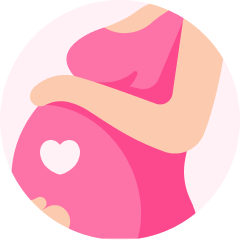Definition
What is erythema multiforme?
Erythema multiforme is a skin reaction that can be triggered by an infection or medication. It’s usually mild and goes away in a few weeks.
But there’s also a rare, severe form that can affect the mouth, genitals and eyes and can be life-threatening. This is known as erythema multiforme major.
How common is erythema multiforme?
Erythema multiforme mainly affects adults under 40, although it can occur at any age. Please discuss with your doctor for further information.
Symptoms
What are the symptoms of erythema multiforme?
The common symptoms of erythema multiforme are
- Fever
- General ill feeling
- Itching of the skin
- Joint aches
- Multiple skin lesions that:
- Start quickly and may return
- May spread
- May appear as a nodule, papule, or macule and may look like hives
- Have a central sore surrounded by pale red rings, also called a “target’, “iris’, or “bulls-eye’
- May have vesicles and blisters of various sizes (bullae)
- Are located on the upper body, legs, arms, palms, hands, or feet
- May involve the face or lips
- Are usually even on both sides (symmetrical)
Other symptoms may include:
- Bloodshot eyes
- Dry eyes
- Eye burning, itching, and discharge
- Eye pain
- Mouth sores
- Vision problems
There may be some symptoms not listed above. If you have any concerns about a symptom, please consult your doctor.
When should I see my doctor?
You should contact your doctor if you have any of the following:
- You think you or your child may have erythema multiforme.
Your GP may be able to diagnose it just by looking at the rash, but they can refer you to a skin specialist (dermatologist) if they’re not sure.
If erythema multiforme major or Stevens-Johnson syndrome is suspected, you’ll be referred to hospital immediately because these conditions can be serious.
Causes
What causes erythema multiforme?
The cause of erythema multiforme is often unclear, but some cases are the result of a reaction to an infection or medication.
The condition can’t be passed from person to person.
Infections
Most cases are caused by a viral infection – often the herpes simplex (cold sore) virus. This virus usually lies inactive in the body, but it can become reactivated from time to time.
Some people will get a cold sore a few days before the rash starts.
Erythema multiforme can also be triggered by mycoplasma bacteria, a type of bacteria that sometimes cause chest infections.
Medication
Medication can occasionally cause the more severe form of erythema multiforme. Possible medication triggers include:
- Antibiotics, such as sulfonamides, tetracyclines, amoxicillin and ampicillin
- Non-steroidal anti-inflammatory drugs (nsaids), such as ibuprofen
- Anticonvulsants (used to treat epilepsy), such as phenytoin and barbiturates
Risk factors
What increases my risk for erythema multiforme?
Consult with your doctor for more information about risk factors for erythema multiforme.
Diagnosis & treatment
The information provided is not a substitute for any medical advice. ALWAYS consult with your doctor for more information.
How is erythema multiforme diagnosed?
You doctor will look at your skin to diagnose this problem and ask if you have a history of risk factors or related diseases.
Tests may include:
- Nikolsky’s sign
- Skin lesion biopsy
Examination of skin tissue undera microscope
How is erythema multiforme treated?
Treatment goals include:
- Controlling the illness that is causing the condition
- Preventing infection
- Treating the symptoms
Your doctor may have you stop taking any medicines that may be causing the problem. Do not stop taking medicines without talking to your doctor first.
Treatment of mild symptoms may include:
- Medicines such as antihistamines to control itching
- Moist compresses applied to the skin
- Oral antiviral medicine if reaction is caused by herpes simplex
- Over-the-counter medications (such as acetaminophen) to reduce fever and discomfort
- Topical anesthetics (especially for mouth sores) to ease discomfort that interferes with eating and drinking
Treatment of severe symptoms may include:
- Antibiotics for skin infections
- Corticosteroids to control inflammation
- Treatment in an intensive care or burn care unit for severe cases, Stevens-Johnson syndrome, and toxic epidermal necrolysis
- Intravenous immunoglobulins (IVIG) to stop the disease process
Good hygiene and staying away from other people may help prevent secondary infections.
You may need skin grafting if large areas of the body are affected.
Lifestyle changes & home remedies
What are some lifestyle changes or home remedies that can help me manage erythema multiforme?
If you have any questions, please consult with your doctor to better understand the best solution for you.
Hello Health Group does not provide medical advice, diagnosis or treatment.
[embed-health-tool-bmi]

















